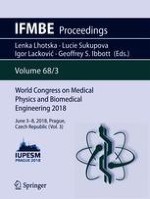2019 | OriginalPaper | Buchkapitel
Principal Component Latent Variate Factorial Analysis of MER Signals of STN-DBS in Parkinson’s Disease (Electrode Implantation)
verfasst von : Venkateshwarla Rama Raju
Erschienen in: World Congress on Medical Physics and Biomedical Engineering 2018
Verlag: Springer Singapore
Aktivieren Sie unsere intelligente Suche, um passende Fachinhalte oder Patente zu finden.
Wählen Sie Textabschnitte aus um mit Künstlicher Intelligenz passenden Patente zu finden. powered by
Markieren Sie Textabschnitte, um KI-gestützt weitere passende Inhalte zu finden. powered by
